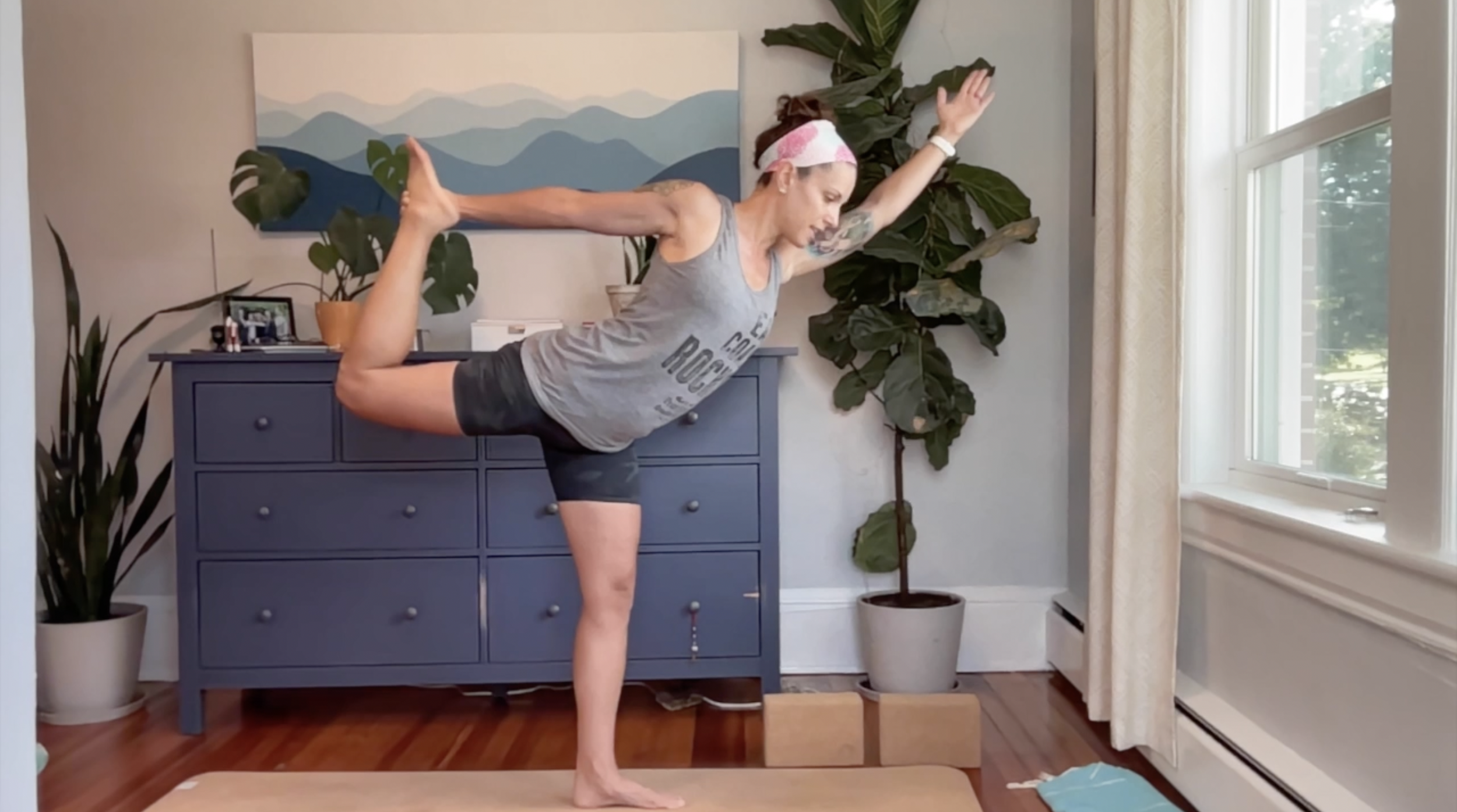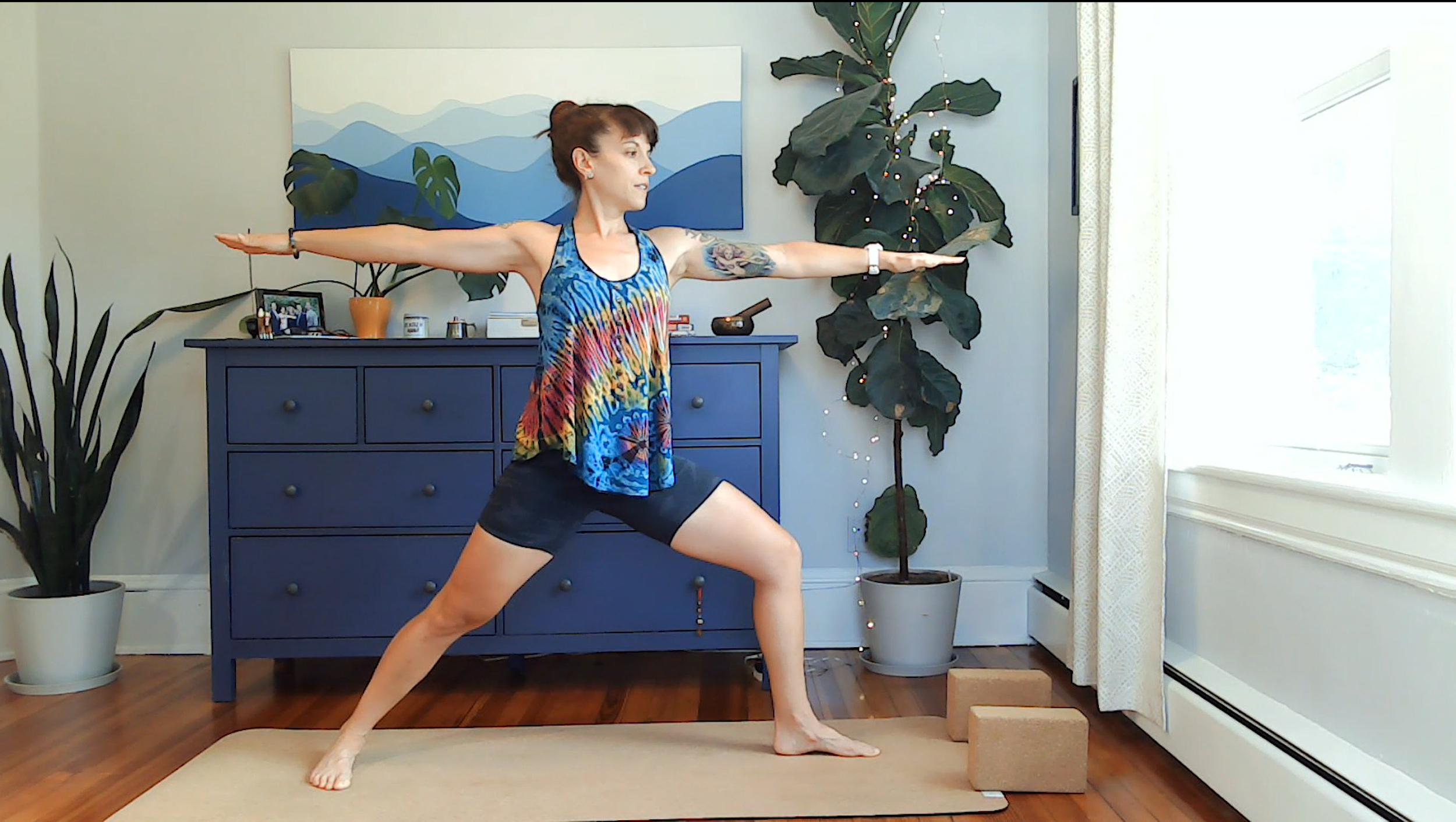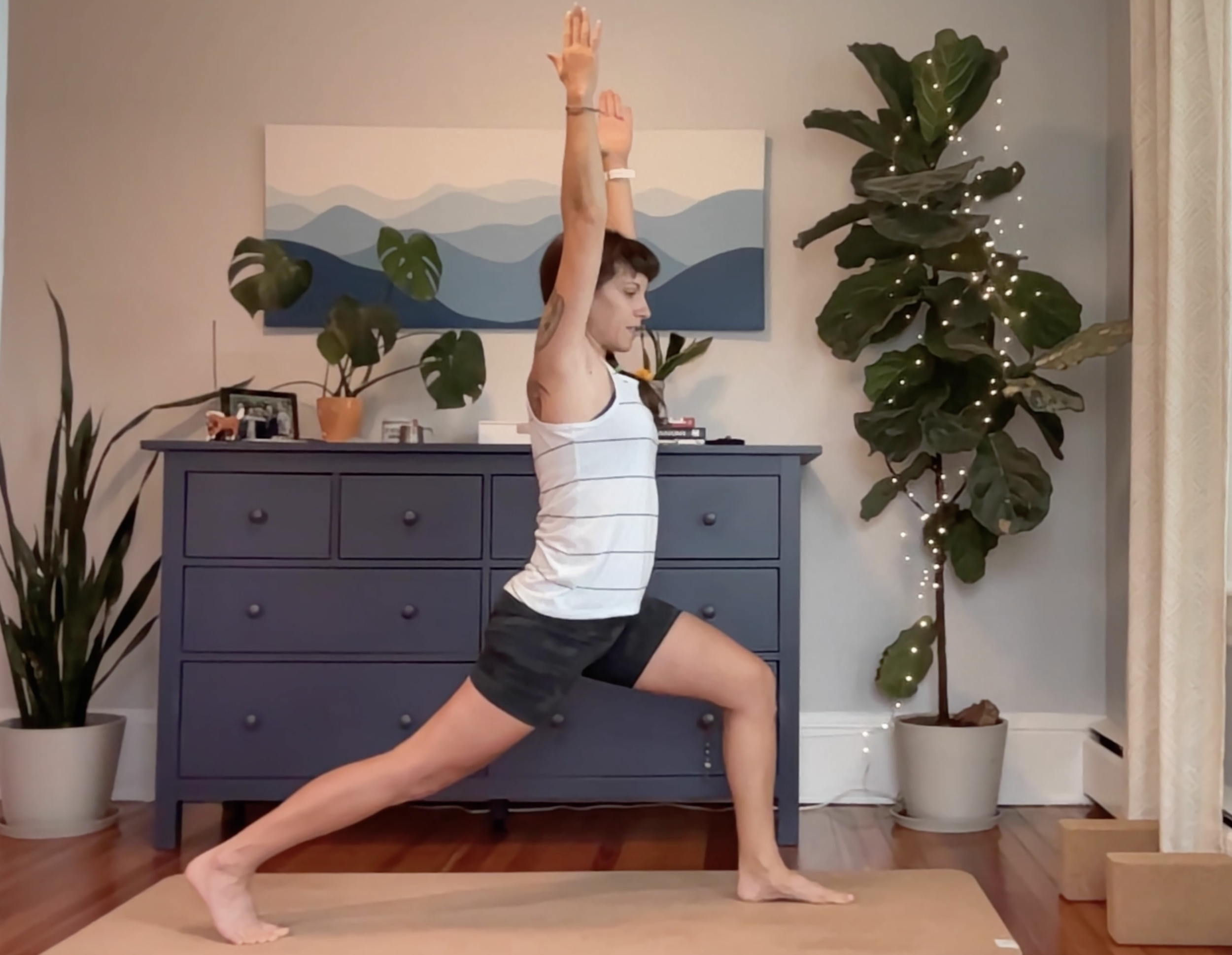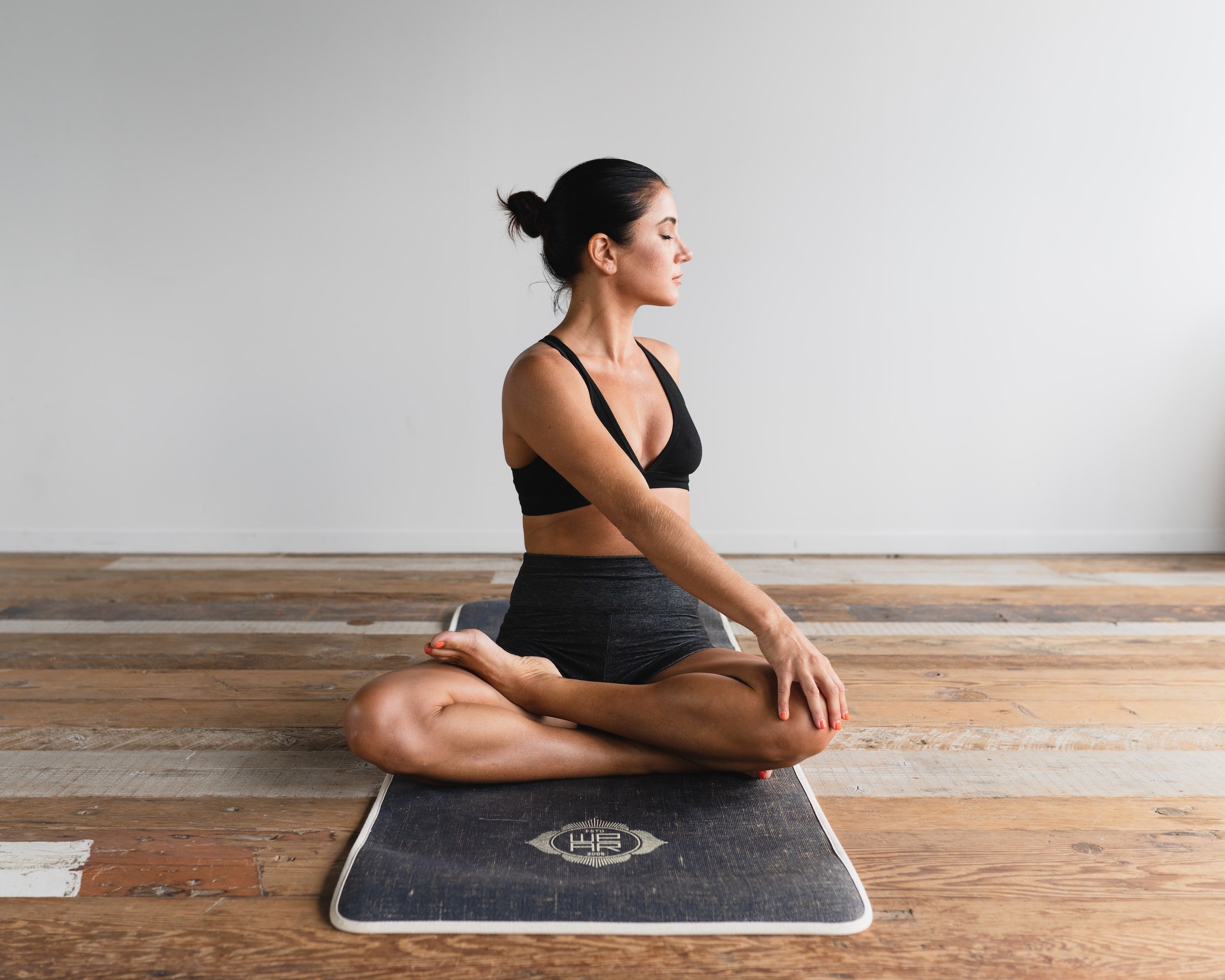Mobility for Endurance Athletes
You are probably aware that you “should” be stretching and foam rolling and doing yoga and a list of other things, but do these activities really have an effect on athletic performance for athletes? And does it matter if you can’t reach your toes anymore?
Research is limited and difficult to quantify on this topic, but in general, studies agree that there is a benefit to yoga and foam rolling for athletes. To best understand the benefits of yoga and myofascial release techniques such as foam rolling and massage to improve mobility, it is helpful to understand what happens inside your muscles based on the stress of training and the stress of life. In this post, we will explore the following to understand how myofascial release techniques and yoga can improve mobility for athletes:
What Happens in the Muscles to Create Limitations and Pain for Athletes?
Fascia is a thin casing of connective tissue that surrounds and holds every muscle, nerve fiber, blood vessel, bone, and organ in place. Fascia is normally smooth, slippery, and flexible, but overuse, underuse, and trauma can cause it to dry up and tighten around muscles, creating adhesions where the muscle cannot slide smoothly inside its fascia, limiting mobility and leading to trigger points.
A trigger point forms when muscle cells become trapped in a contracted state. Contraction in muscles occurs in the sarcomere. Millions of them contract together to create movement. When sarcomeres become unable to relax out of their contracted state, a trigger point forms. These trigger points feel like a small knot or lump in a muscle, ranging in size from a pin head to the size of your thumb. A trigger point creates a localized spot of extreme tenderness in a band of muscle tissue.
These adhesions and trigger points can come from many places such as overuse, misuse, repetitive movement, abnormal bone structure, stress caused by holding a certain posture, or impact from crashes or accidents. The common thread here is that a muscle is being used a lot, and possibly being used or overused in a way it is not intended to be used. For example, sitting for long periods of time, holding an uncomfortable position on your bike, or compensating for one leg being longer than the other.
Microtrauma in muscle, caused by normal training, overuse, or misuse, can also lead to issues when it doesn’t heal completely or properly. The body creates collagen to heal the damaged tissue. The collagen fibers clump together, creating a “sticky” spot within the otherwise smooth muscle and fascia. This can lead to tension from tissues pulling on each other. It can also result in scar tissue, which is less flexible than healthy tissue.
How Do Trigger Points and Muscle Adhesions Affect Performance for Athletes?
Sarcomeres normally work like tiny pumps to move blood through capillaries to supply cells with their metabolic needs by contracting and releasing. These metabolic needs include oxygen, glucose, amino acids, and fatty acids that muscle cells need to fuel activity. However, when sarcomeres in a trigger point become stuck in a contracted state, or when cells are being squished by adhesions, blood flow stops or becomes significantly limited in the affected area. As a result, the cells cannot get the oxygen and fuel they need, and waste products cannot be transported away. This causes irritation in the affected area, the muscle sends out pain signals, and the brain puts an order for rest onto the muscle. You then stop using the muscle, causing it to shorten and tighten.
Trigger points and adhesions can cause pain or stiffness in the immediate area, or they can refer their pain to other parts of the body. This can then lead to more trigger points in other places, leading to more muscles shortening and tigenting, which can then lead to more trigger points. Your muscles are not individual elements within your body, they are all directly connected by fascia, so an issue in one place can have a direct effect on another part of your body.
Reduced Mobility, Flexibility, and Range of Motion
When your brain gets the message that your muscle is in pain from a trigger point or adhesion, it sends a message to rest this muscle, causing you to avoid using it, and causing the muscle to become shorter and tighter. This can cause other muscles to pick up the slack, eventually becoming overworked as well, and developing their own trigger points and tightness. Scar tissue that may develop from microtrauma has less flexibility than muscle or fascia, leading to decreased range of motion for the affected muscle.
Reduced Ability of the Muscle
When trigger points prevent muscles from relaxing, the muscles tire quickly, recover slowly, and contract excessively. Trigger points and adhesions also restrict blood flow, making it difficult or impossible for muscle cells to get the oxygen and fuel they need to do their work, thereby limiting their performance.
Injuries in Joints and other Places in the Body
Trigger points and adhesions can also keep muscles out of balance, causing issues in joints that may arise as pain or popping and grinding sounds. For example, knee pain from cycling or running isn’t actually coming from your knee. It is likely being caused by issues in muscles or fascia above or below your knee. And it is not uncommon for people to have one leg shorter than the other as a result of tightness in the Quadratus Lumborum pulling one side of the pelvis higher than the other. As you can imagine, this unevenness might cause other muscles in your back or legs to begin working outside of their normal duties.
Nerve Pain and Numbness
Muscles that have been shortened or enlarged by trigger points can also squeeze nearby nerves. And since nerves are also fully encased in fascia, adhesions can cause nerves to get “stuck” and compressed as you move. Compression of nerves can cause numbness, tingling, burning, and hypersensitivity. This is common in the hands, arms, legs, and feet.
How Can Athletes Maintain or Regain Mobility?
I realize this sounds like a soft tissue spiral of doom right now, but it doesn’t have to be. A few minutes a day can make a significant difference in both performance and comfort. If you are already experiencing significant pain or limitation, it might be time to seek the help of a physical therapist. If you are healthy and happy, there is no time like the present to do what you can to make sure you stay that way.
However, no amount of foam rolling and stretching is going to fix your hamstring if your saddle is too high. You may never be able to pinpoint an exact cause of a certain issue, but you can rule out some things. For example, make sure your bike fit is correct, your running and swimming form are optimal, and any other equipment–such as running shoes–fit appropriately. Make sure your training load is sensible for your current fitness level. These items may require the help of a professional such as a bike fitter, coach, or physical therapist.
If you have addressed all of those areas, the following section discuss how myofasical release techniques and yoga can improve mobility for athletes.
Myofascial Release Techniques to Improve Mobility for Athletes
Myofascial Release Is Used to Eliminate Trigger Points and Adhesions Through Pressure: By applying and releasing pressure on the affected area, you can increase blood flow, encourage the sarcomeres to relax, and break up adhesions. You can do this on your own with tools such as foam rollers or massage balls, or you can see a professional massage therapist.
Try it at Home: A few minutes a day goes a long way–and you really should not be doing more than that in one spot in a session anyway or you risk doing more harm than good. Spend about 2 to 5 minutes on a section of your body–for example, your quads, glutes, or shoulders. While foam rollers are good for your legs and larger areas, massage balls can give you more direct pressure on areas such as your glutes, back, and shoulders. They are also good for smaller muscle areas like your arms, hands, and feet. I love the Yoga Tune Up brand massage balls because they have just the right amount of squish, they don’t slide around, and they come in a two pack with a little bag that doubles as a way to use two balls in a peanut shape and also keeps them from rolling under your furniture never to be seen again. And Gaiam sells a cork roller if you prefer natural materials. You can also just use your hands.
Go over the entire area looking for tight spots:
Use moving pressure and not static pressure.
Use short repeated strokes.
Go slowly.
Aim for a discomfort level of about 4 to 7 on a scale of 10.
Stop and move to a different area if you feel extreme pain or nerve pain.
If an area is too painful for direct pressure, try spots above or below it.
If you are not noticing a benefit after a few sessions, you might be working on the wrong spot. Trigger points can refer pain to other areas.
How Often and When: Consistency is key here. Consistent effort will help relax trigger points and remove adhesions, but problem spots are likely to come back. Learn the spots that are key for you, and return to them even after any problems have been resolved.
Doing your foam rolling or massage before stretching or yoga will bring the biggest benefit, especially if you have a limited or painful area that you are working on. If you do have significant trigger points and adhesions, your muscles may just stretch around these spots–doing little to help your problem. For this reason, it can be important to add myofascial release techniques to your routine.
Yoga for Athletes to Improve and Maintain Mobility
Yoga Encourages Movement Through Your Full Range of Motion: If you sit at a desk all day, and also ride your bike a lot, you are spending a lot of time in essentially the same forward position. This means all the same muscles are in a contracted state for much of your day. Moving through your full range of motion can give these muscles a break, and fascia adhesions tend to feel better with movement. Yoga can help both maintain your range of motion and identify areas of concern before they become problems.
Yoga Can Improve Flexibility and Range of Motion: Flexibility may not seem immediately relevant to a sport like cycling or running, but limitations in your range of motion can result in compromises in your position on the bike or inhibit your stride when running. Also, if you never lift your arms overhead or try to touch your toes, you might not know when your range of motion starts to become limited. You can stretch on your own, but a well-designed yoga class can cover more ranges of motion and bring additional benefits.
Yoga Reinforces Correct Posture: The only times that the small supporting muscles of your spine are relaxed is when you are laying down or standing up perfectly straight. Poor posture can overextend some muscles, while causing others to shorten. Most people don’t know what “correct” posture really is, and some yoga teachers focus more on alignment than others. You can use the following description of Tadasana to practice aligning your spine.
Stand with your feet hip distance apart and parallel. Your feet should look like the number eleven and not like an “A” or a “V.”
Lift through the arches of your feet as you hug your ankles in.
Press your upper thighs back as you tuck your tailbone under. Picture your pelvis as a bowl of water, don’t let the water tip out the front or the back.
Lengthen through all four sides of your waist.
Broaden across your collarbone and plug your shoulders on to your back as you soften your front ribs in. Your ribs will want to pop forward as your bring your shoulders back, tuck them back in and then check your shoulders again. Find balance between these two opposing actions.
Extend tall through the crown of your head.
Carry this alignment through all of your yoga poses and wherever you go. Try it while running, I promise you will feel lighter and faster. Or at least your competition will not be able to tell how tired you are. Yoga philosophy believes that a properly aligned spine allows energy—or prana—to flow through you. In more modern terms, I think it makes sense that a properly aligned spine allows for better nerve signaling and blood flow, and it places your ribs in a position to expand easily as you breathe.
Yoga Reduces Stress: Stress activates the parasympathetic nervous system which causes an increase in muscle tension and can encourage muscles to remain in a contracted state. Even if you stretch, a muscle responding to stress might not let go. Yoga and meditation can help you relax to achieve a full range of motion.
Yoga Can Strengthen Supporting Muscles: Depending on the type of yoga you choose, you can get strengthening benefits as well. This can help make sure all muscles are working evenly and properly to support movement. You will get the most benefit from strength work if you address limitations in range of motion first. Otherwise, you are exercising muscles in their restricted state, which is going to be limited in its effectiveness.
Free Online Yoga Classes For Cyclists and Runners
Related Posts
Sources
Davies, C. (2004). The Trigger Point Therapy Workbook (Second). New Harbinger Publications, Inc.
Wiewelhove T, Döweling A, Schneider C, Hottenrott L, Meyer T, Kellmann M, Pfeiffer M, Ferrauti A. A Meta-Analysis of the Effects of Foam Rolling on Performance and Recovery. Front Physiol. 2019 Apr 9;10:376. doi: 10.3389/fphys.2019.00376. PMID: 31024339; PMCID: PMC646576
Polsgrove MJ, Eggleston BM, Lockyer RJ. Impact of 10-weeks of yoga practice on flexibility and balance of college athletes. Int J Yoga. 2016 Jan-Jun;9(1):27-34. doi: 10.4103/0973-6131.171710. PMID: 26865768; PMCID: PMC4728955.
Muscle pain: It may actually be your fascia. Muscle Pain: It May Actually Be Your Fascia | Johns Hopkins Medicine. (2021, August 8). Retrieved November 12, 2022, from https://www.hopkinsmedicine.org/health/wellness-and-prevention/muscle-pain-it-may-actually-be-your-fascia
Featured image by Dane Weston







This 30-minute class uses trigger point work followed by longer hold stretches to improve hip mobility and help with back pain and discomfort. You will need a foam roller and a massage ball or tennis ball.
This class uses trigger point work followed by longer hold stretches to improve hip mobility and help with back pain and discomfort. You will need a foam roller and a massage ball or tennis ball. I love the Yoga Tune Up therapy balls because they have just the right amount of squish and they don’t slide around beneath you. They also come in a handy bag that doubles as a way to use them both together in a peanut shape and keeps them from disappearing forever under your furniture.